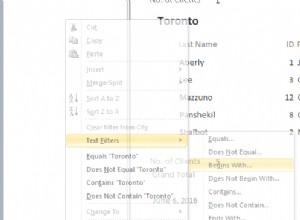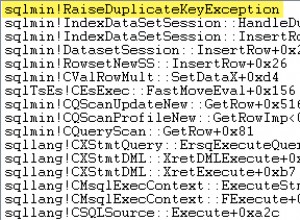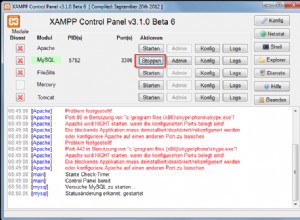Jeśli mamy gwarancję, że date_started , datefinished , $DateA i $DateB nie są NULL i mamy gwarancję, że date_started nie jest większe niż date_finished ...
`s` represents `date_started`
`f` represents `date_finished`
`a` represents the smaller of `$DateA` and `$DateB`
`b` represents the larger of `$DateA` and `$DateB`
Wizualnie:
s-----f overlap
-----+-----+----- -------
a-b | | NO
a---b | YES
a-----b | YES
a---------b YES
a-----------b YES
a---b | YES
a-----b YES
a-------b YES
| a-b | YES
| a---b YES
| a-----b YES
| a-b YES
| | a-b NO
Możemy łatwo wykryć, kiedy zakresy się nie pokrywają:
( a > f OR b < s )
I możemy łatwo to zanegować, aby zwrócić „prawda”, gdy jest "nakładanie się":
NOT ( a > f OR b < s )
Konwersja do SQL:
NOT ( GREATEST('{$dateA}','{$dateB}') < p.date_started
OR LEAST('{$dateA}','{$dateB}') > p.date_finished
)




